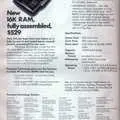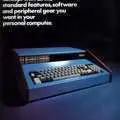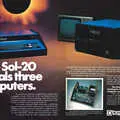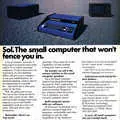Processor Technology Advert - January 1977
From Byte - The Small Systems Journal
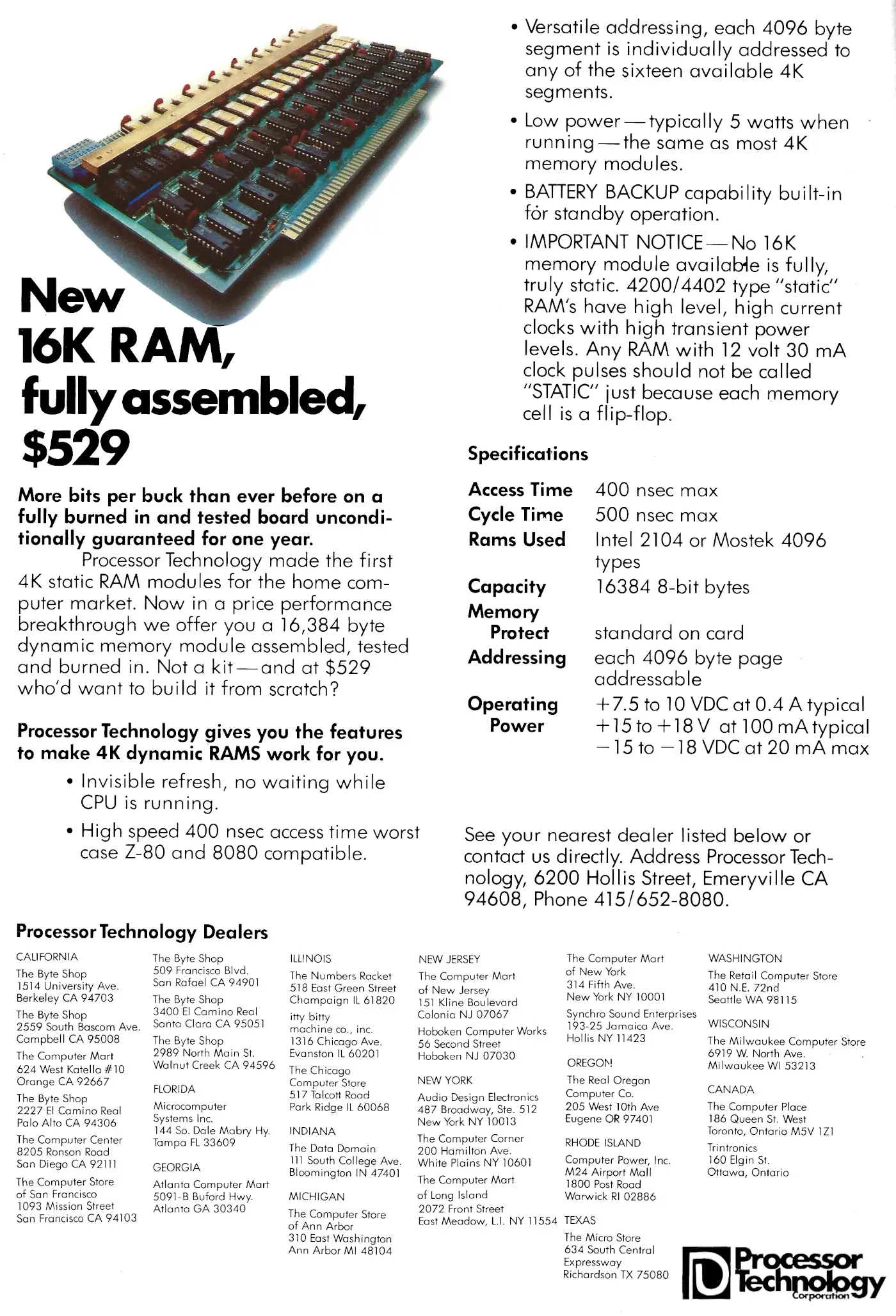
Processor Technology: New 16K RAM Fully Assembled
More bits per buck than ever before on a fully burned-in and tested board unconditionally guaranteed for one year, says the advert about what is apparently a breakthrough price for a whole 16 kilobytes of memory.
This did indeed compare well to the usual amount of memory available on contemporary systems, like the 8K that came with the Cromemco Z-1, the 2K that came with a SWTPC 6800 or the Commodore PET's 4K or 8K allocation (although these were up to 16 or 32K only a year later).
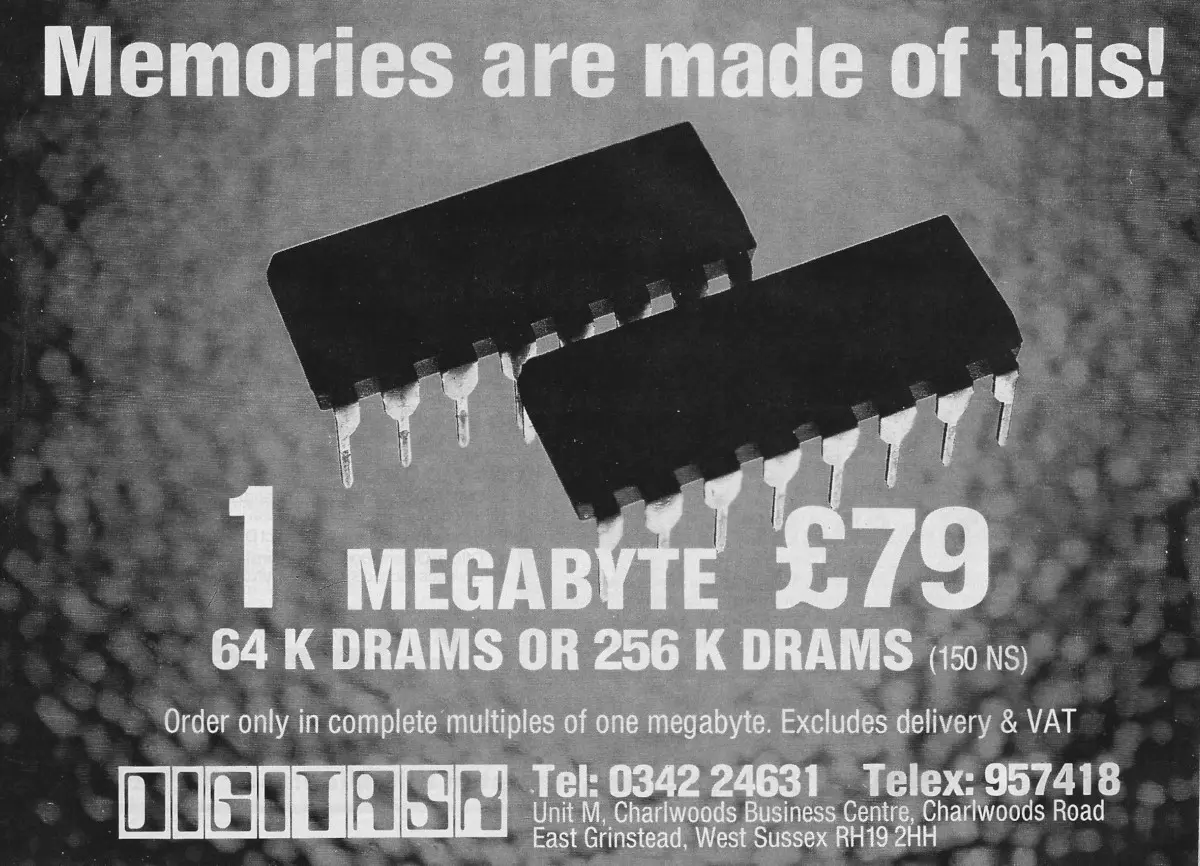
A 256K (kilobit, not byte) dynamic RAM 16-pin DIL memory chip - same size, 64 times the memory density of the 1977 4 kilobit Mostek 4096 mentioned in the main advert. Memory is down to £80,800 a gigabyte. From Personal Computer World, April 1987
It's always interesting to compare then and now, and this provides some truly staggering figures when comparing a 1977 16K card retailing for $529 (about £3,170 in 2025 money) to a 2023 4GB memory stick retailing for £12. For one thing, cost per megabyte has fallen 60 million-fold over a 46-year period.
- if cost per kilobyte remained the same, a 4GB stick would cost £790 million. Processor Technology's first-ever product, a 4K static memory module for the MITS Altair 8800, released in 1975, would give an equivalent cost of around £1,580 million - the cost of memory had halved in less than two years.
- if power consumption per kilobyte remained the same (this 16K board is stated to consume about 4 watts), the 4GB stick would consume over 1 megawatt - enough to run about 50 houses
- The 16K board is made up of 32 x 4 kilobit Mostek MK4096 chips, plus controlling chips. A 4GB stick using the same configuration would require 14.6 million chips. If one chip weighs 5 grams, that's over 70 tonnes of chips
- The 52 chips per memory module were mounted on an S-100 board, which has dimensions of 10" x 5", or 25.4 x 12.7cm. 4GB of memory would require 250,000 boards which would cover nearly 8,000 square metres, or 1.2 full-sized soccer pitches.
- Making a very broad assumption that a significant part of memory speed is a function of the length of circuit board tracks to the memory chips, then the furthest chips on the 8000m² 4GB circuit board would have access times over 120 milliseconds, making them all but unusuable.
Date created: 21 January 2013
Last updated: 09 October 2025
Hint: use left and right cursor keys to navigate between adverts.
Text and otherwise-uncredited photos © nosher.net 2025. Dollar/GBP conversions, where used, assume $1.50 to £1. "Now" prices are calculated dynamically using average RPI per year.
